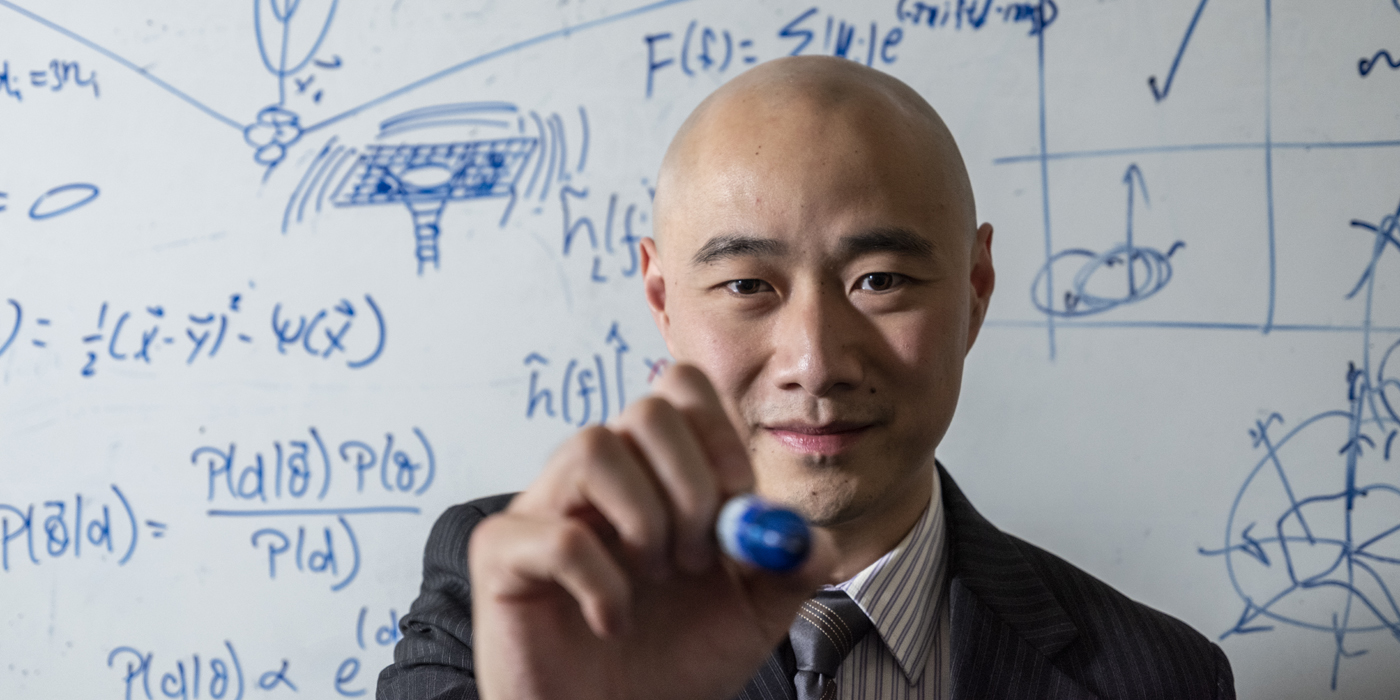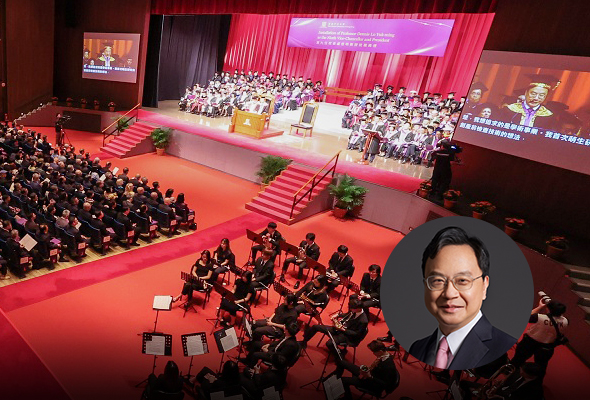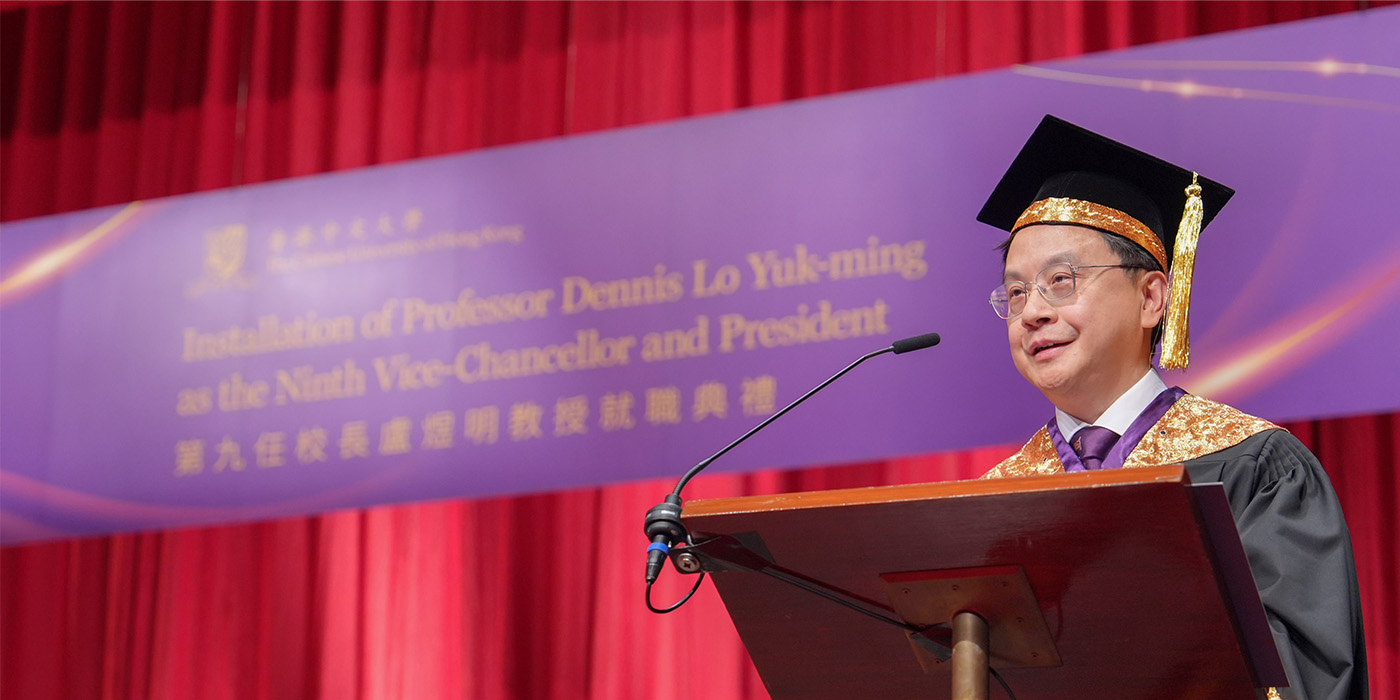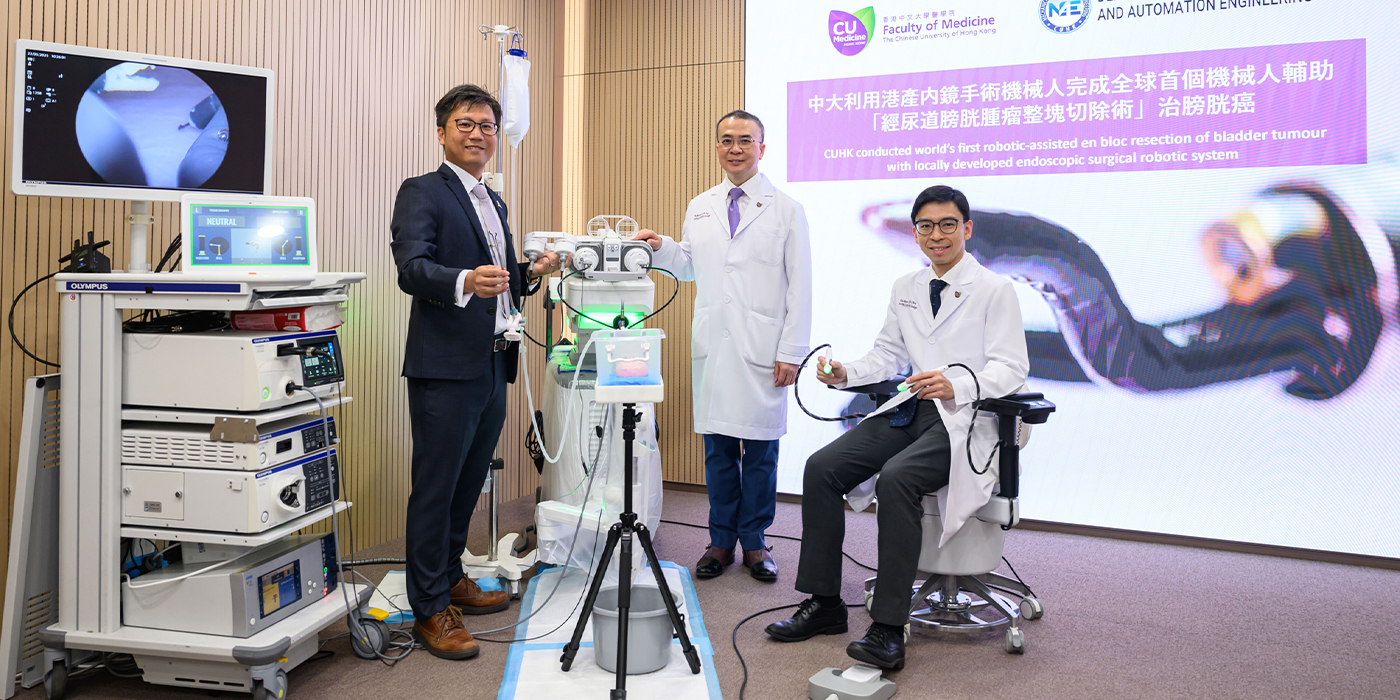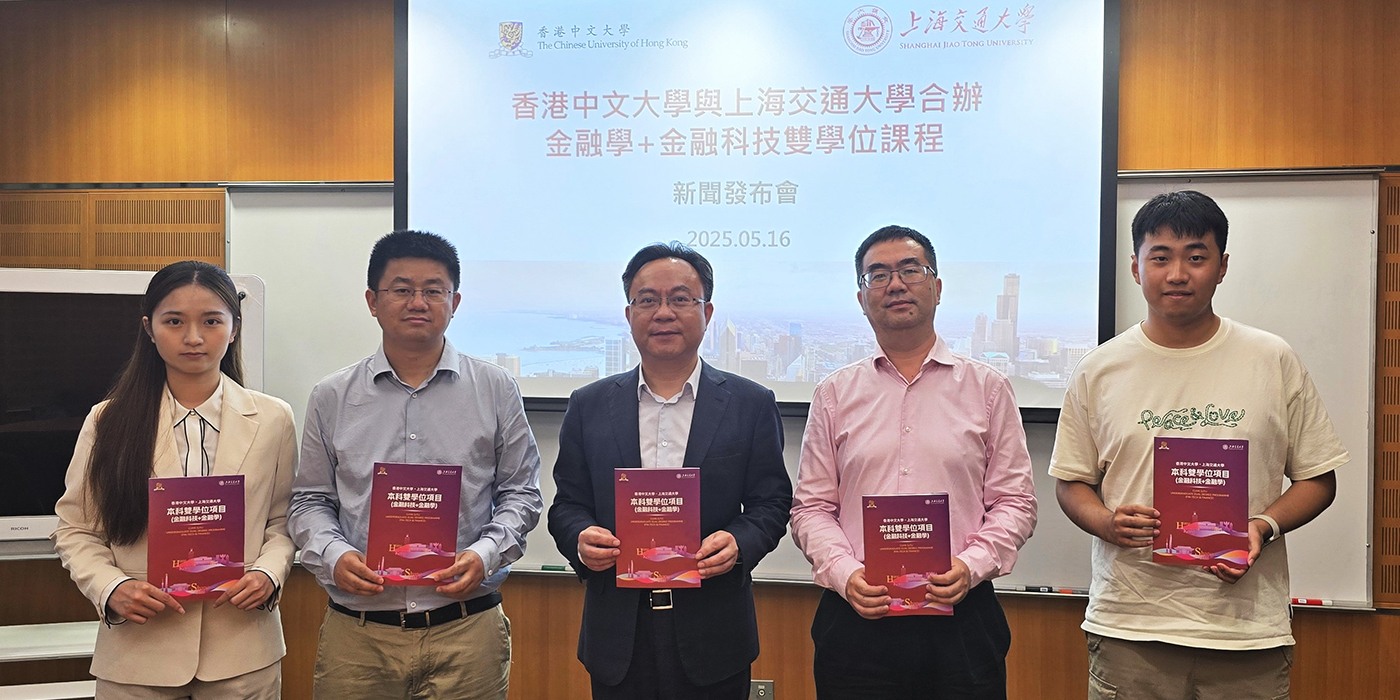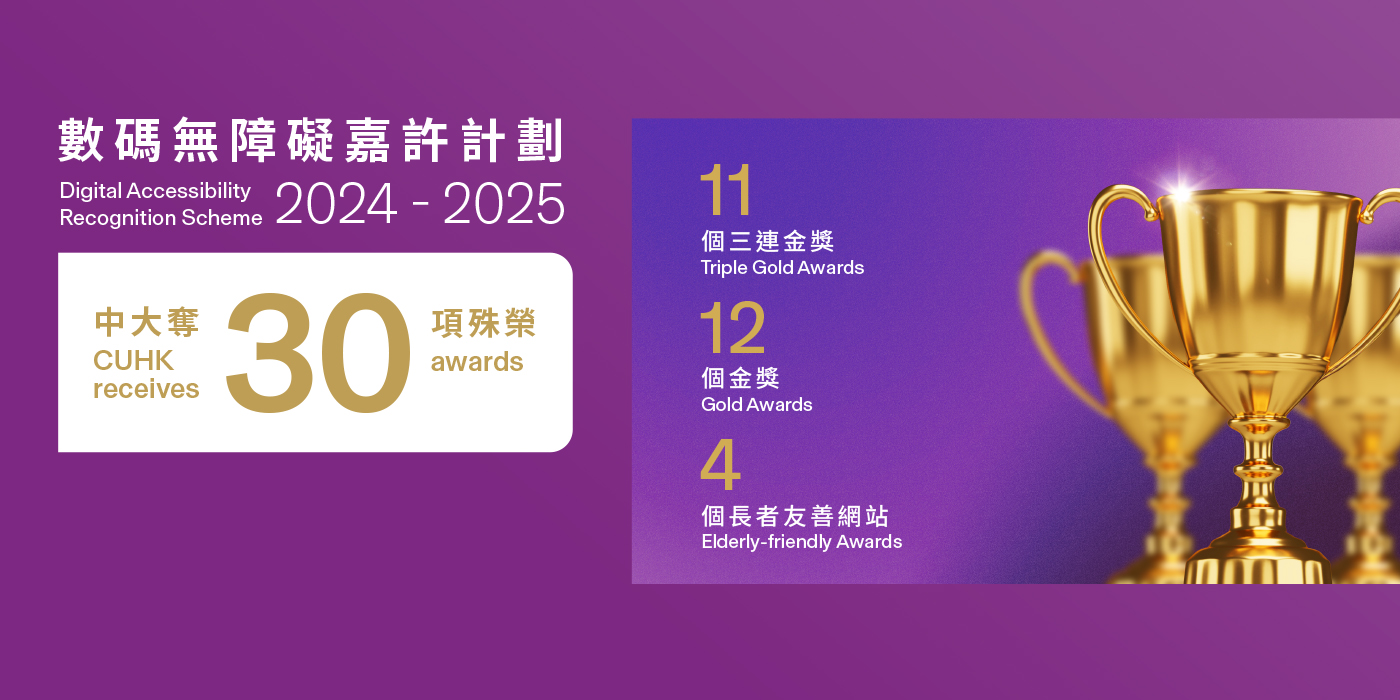Opening a new window to understanding the universe
“One of the grand challenges in modern physics is that 95% of the universe is dark, meaning that it doesn’t emit light,” says Professor Tjonnie Li from CUHK’s Department of Physics who has made significant contributions to the discovery of gravitational waves. “It is problematic because when we look up at the sky, nothing is visible. We see the effect, but not the universe itself.”
Professor Li, who heads the CUHK gravitational-wave research group with Professor Hannuksela Otto Akseli, strives to uncover and interpret signals from gravitational waves that can open a new window to understanding the universe.
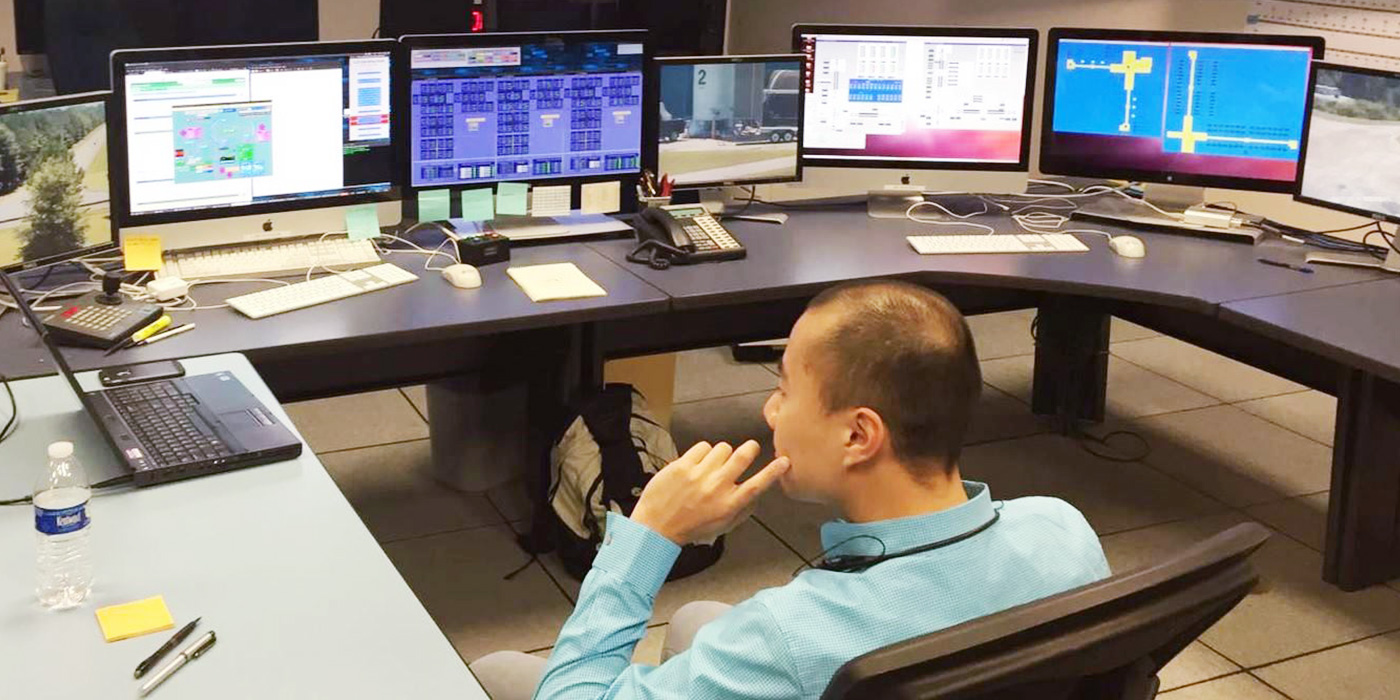
Gravitational waves, which can be regarded as ripples in spacetime, are emitted by anything that accelerates. The challenge is that these waves are extremely weak. Massive and explosive mechanisms are required for detection. While Albert Einstein predicted the existence of gravitational waves a hundred of years ago, he noted that these waves were too weak to be measurable. Today, technological advancement has made it possible – In 2015, they were first detected by the twin Laser Interferometer Gravitational-wave Observatory (LIGO) detectors.
Professor Li is leading the only group in Hong Kong involved with the work of LIGO. “The LIGO and Virgo detectors are unique L-shaped interferometers that can measure things we did not think were possible. The groundbreaking detection of gravitational waves by these advanced detectors is a technological marvel that enables the measurement of small changes in spacetime. The experiments involved more than 80 institutes around the world, and is a testimony of what humans can achieve when we work together across borders, languages and cultures.”

Hearing the universe’s voice
In addition, it is also challenging to differentiate gravitational waves from noises. “We spent a lot of time trying to understand the source and doing calculations, hoping to find out what kinds of unique signals we expect from these waves,” says Professor Li. The breakthrough came in 2015 as scientists, for the first time, observed gravitational waves arriving at the Earth from colliding black holes in the distant universe. “The first day I joined CUHK was actually the day when the hints of detection appeared,” says Professor Li. The detection has opened a new window to the universe, revolutionising the study of the cosmos and its content.
“Understanding the universe has been a persistent desire throughout the history of mankind,” says Professor Li. The universe’s darkness will never be observable with conventional astronomy using light. Gravitational waves bring scientists to better understanding the universe. “To me, the theory behind gravitational waves, that is Einstein’s general relativity, is one of the most beautiful theories in physics. By doing research in this seemingly mysterious field, I am confident it has a tremendous potential to inspire future generations in doing research in STEM sciences,” he adds.
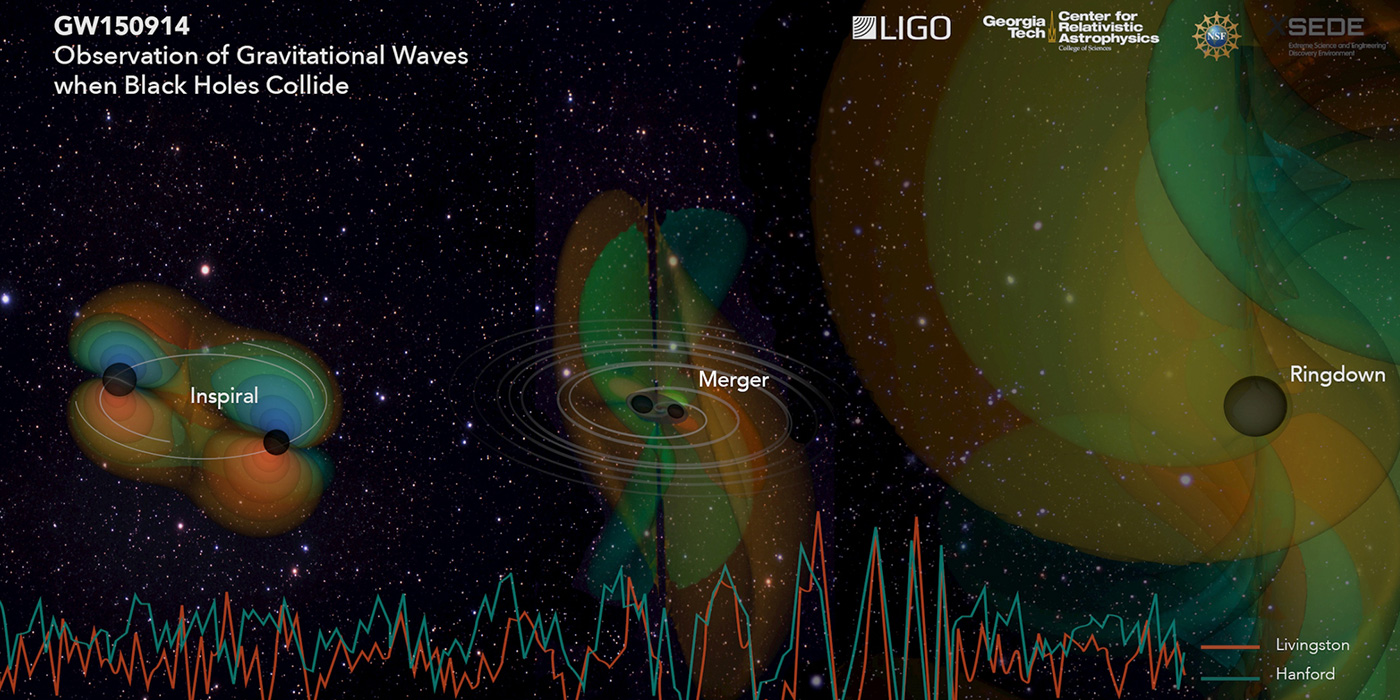
Interpreting the universe’s signals
Following the discovery of gravitational waves, the CUHK team seeks to interpret interesting signs within. “The current challenge is to map out what is in the universe by observing it on a larger scale,” he notes. “Our next step is to extract signals carrying crucial sub-structures and extra information.” For instance, the team is looking into gravitational lensing where the signal itself gets deformed by a massive object between the source and the observer. By being able to disentangle that from the signal, our understanding of the universe can go beyond what is shown on detectors.
“We really need gravitational waves as the avenue to bring us to the next stage of the understanding of the universe. I believe gravitational waves can broaden our understanding about the cosmos in the upcoming decades and centuries of mankind,” says Professor Li. “There is so much more to be done.”
By Gillian Cheng
Photos by LTC

